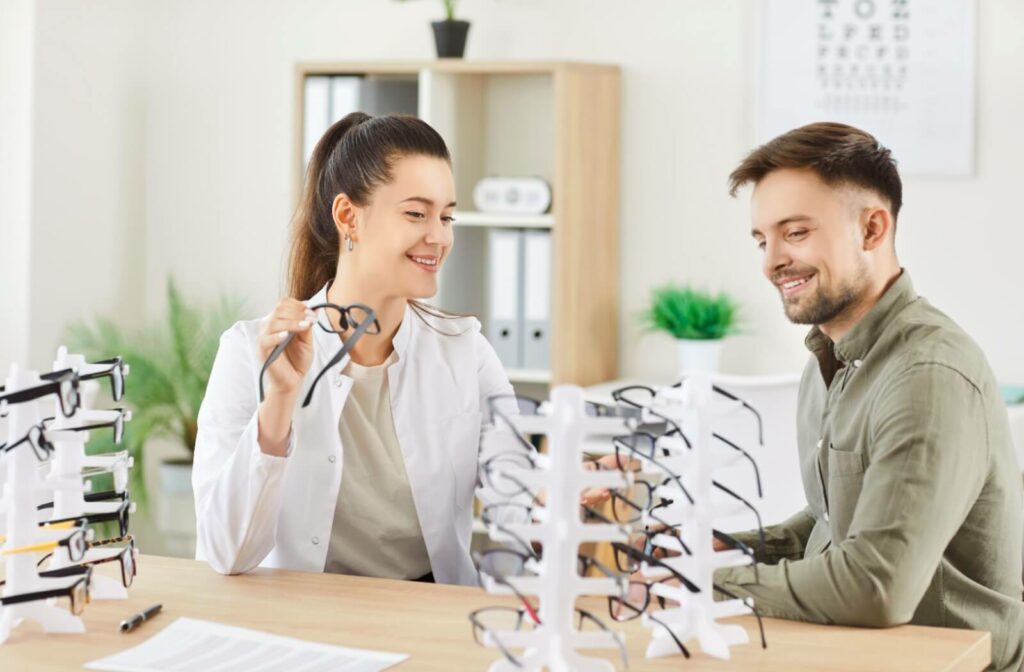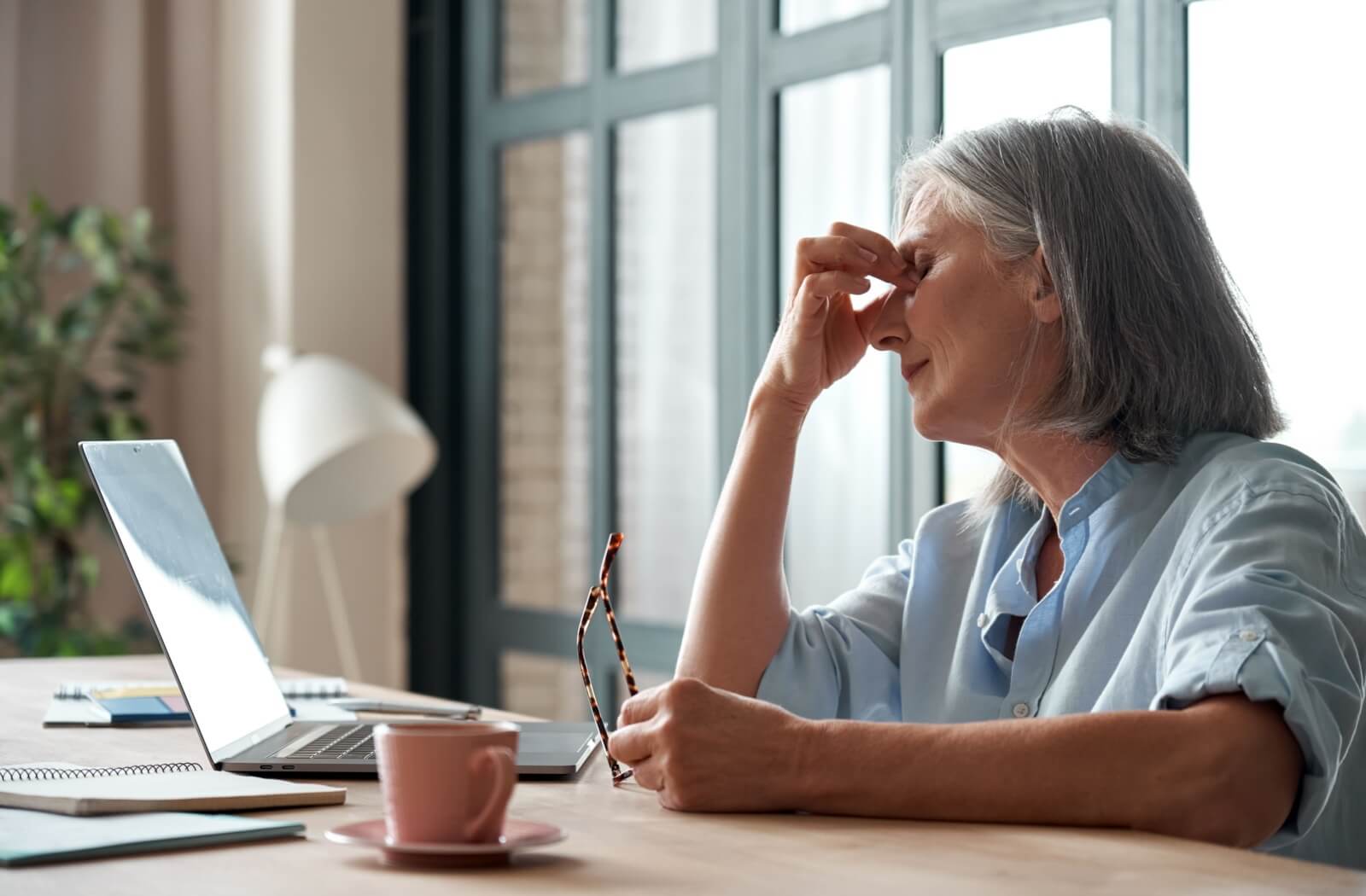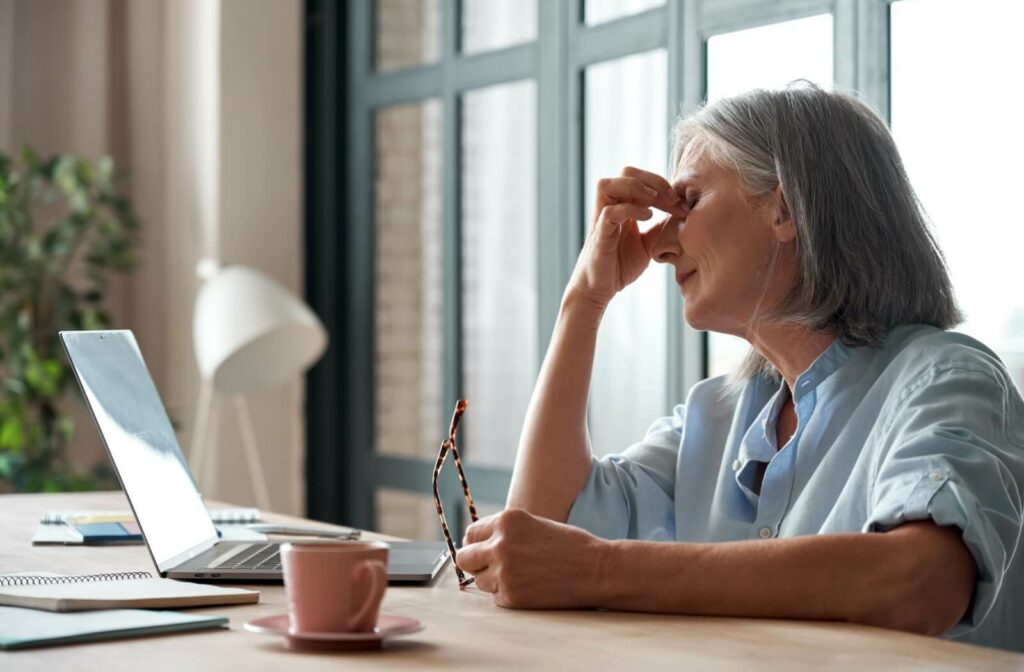Welcome to the 21st century, where screens dominate our daily lives. From laptops and smartphones to tablets and e-readers, our eyes are constantly fixated on digital devices. With this increased screen time comes a rising concern—digital eye strain.
In some cases, reading glasses can help alleviate eye strain, especially when your eyes are strained from focusing on up-close objects or work. Reading glasses aren’t a one-size-fits-all solution, though. A pair of over-the-counter reading glasses may be enough for many people, but depending on what’s causing the strain, some people may benefit from actual prescription glasses.
A comprehensive eye exam is always a great place to start. Optometrists can provide prescription eyeglasses or offer tailored advice on which reading glasses you should use.
Understanding Eye Strain
Eye strain is a common condition occurring when your eyes get tired from prolonged use, such as reading, driving, or looking at screens for long periods. Common symptoms include:
- Blurred vision
- Headaches
- Dry eyes
- Neck and shoulder pain
- Light sensitivity
- Watery eyes
- Itching and burning eyes
- Back pain
- Difficulty focusing
There isn’t a one-size-fits-all answer to dealing with eye strain. Typically, treatment involves removing the trigger, such as using a computer screen or reading small print—if even temporarily. Symptoms usually subside shortly after. However, if they persist, it’s important to consult your eye doctor.
What Are Reading Glasses & How Do They Work?
Reading glasses are specially designed lenses that help magnify text and reduce the effort needed for your eyes to focus on close-up objects. They are particularly beneficial for individuals who experience presbyopia, a natural age-related condition that makes it difficult to see things up close.
These glasses work by adjusting the focal point of your eyes, making it easier to read fine print or work on small details. Unlike regular glasses, reading glasses typically feature lenses with a specific magnification level, ranging from +0.50 to +4.00 diopters. This magnification helps reduce the strain on your eyes, making reading or working for extended periods easier.
Reading glasses are typically available over-the-counter without a prescription. Although, it’s a good idea to check with your eye doctor, as they can offer tailored advice on which ones you should go with.
Reading Glasses & Eye Strain
Reading glasses can be incredibly effective if you suffer from eye strain due to presbyopia. They reduce the effort your eyes need to make to focus on close-up objects, thereby alleviating strain.
But if your eye strain is caused by prolonged screen time, the effectiveness of reading glasses may vary. While they can help magnify the text on your screen, they don’t address other factors like poor ergonomics or inadequate lighting, which can also contribute to eye strain.
Who Can Benefit from Reading Glasses?
Reading glasses are particularly beneficial for individuals over the age of 40 who experience presbyopia. But they can also be helpful for anyone who finds it challenging to focus on close-up tasks, regardless of age.
Students, office workers, and avid readers can all benefit from using reading glasses. They offer a simple, cost-effective solution for reducing eye strain and improving focus during tasks requiring close-up vision.

Choosing the Right Reading Glasses
Selecting the correct reading glasses involves more than just picking a pair off the rack. Here are some tips to help you make the best choice:
- Get an eye exam: Before purchasing reading glasses, it’s essential to have a comprehensive eye exam. This will help determine the correct magnification level you need.
- Consider blue light protection: If you spend a lot of time in front of screens, consider reading glasses with blue light protection. These lenses can help reduce the impact of blue light on your eyes.
- Test different magnifications: Reading glasses come in various magnification levels. Test a few to find the one that offers the most comfort and clarity.
Reducing Eye Strain Beyond Reading Glasses
While reading glasses can be effective, there are other ways to reduce eye strain. Here are some practical tips:
- Take regular breaks: Follow the 20-20-20 rule. Every 20 minutes, take a 20-second break and look at something 20 feet away.
- Adjust your workspace: Make sure your screen is at eye level, and your chair provides adequate support. Proper ergonomics can make a significant difference.
- Use adequate lighting: Make sure your workspace is well-lit to reduce the strain on your eyes.
Discuss Your Symptoms with Your Eye Doctor
Eye strain is a common issue in today’s digital age, but solutions are available. Reading glasses can effectively reduce eye strain, especially for those with presbyopia or who engage in close-up tasks. Choosing the right pair and incorporating other eye-friendly practices can significantly improve your comfort and productivity.
Contact our team at Hazleton Eye Specialists if you’re experiencing eye strain and think reading glasses might help. One of our optometrists can examine your eyes and offer tailored advice on choosing the right pair for your vision needs.



